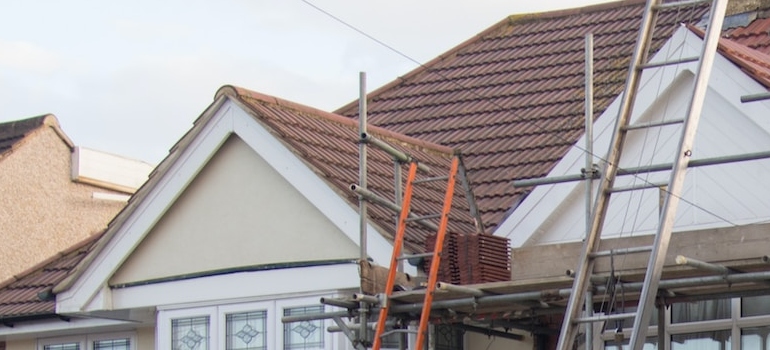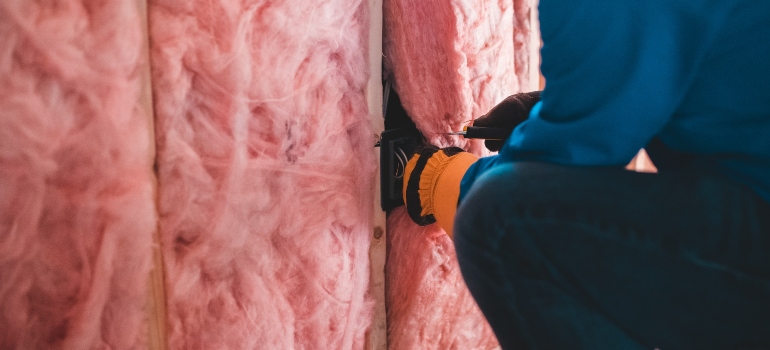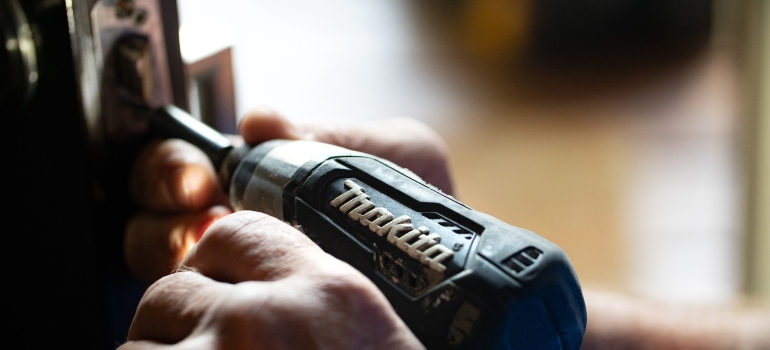Winterizing Your Seattle Home: Essential Tips for Homeowners
Winter in Seattle brings its own quirks, and for homeowners, that means it’s crucial to get your house ready. Regardless of whether you’re just moving in or planning to move out, it is vital to understand Seattle’s unique winter challenges. The city’s mix of chilly winds and occasional snow demands special attention to your home. Hansen Bros. Moving & Storage is here to guide you through this. You’ll find practical tips to keep your home cozy and safe, tackling everything from insulation to energy efficiency. These strategies are especially handy if you’re winterizing your Seattle home or preparing it for the next owner. So, let’s make sure your home stands strong against the winter elements in the Emerald City.
Preparing Your Home for a Winter Arrival in Seattle
Moving to Seattle in the heart of winter? Brace yourself for a unique experience. The city’s winters, with their chilly air and damp conditions, add a layer of complexity to your move. Just imagine navigating slippery roads while moving boxes or setting up your new home as daylight fades quickly. And yet, it’s all about timing, booking experienced moving services in Seattle, and a bit of savvy planning. Keep an eye on the weather forecast and make the most of the daylight hours to ease your transition!
Heating Systems: Getting it Right
A cozy, warm home is non-negotiable in Seattle’s winter. If your new place already has a heating system, get it checked and serviced as quickly as possible. You want it running efficiently and safely when the temperatures dip. Picking a new system instead? Look for energy-efficient options that are up to the task of fending off Seattle’s nippy weather.

And remember to get a programmable thermostat! That’s your ticket to a warm home ready for you after a chilly day out. Ensure the system’s ductwork is sealed and insulated, particularly in unheated spaces, to prevent heat loss.
Insulation: Your Hidden Ally
Insulation is like your home’s winter coat – it needs to be snug and in all the right places. Check the attic, walls, and especially those sneaky drafty spots around windows and doors. A little weatherstripping or caulking can go a long way in keeping the warmth where it belongs – inside.
In older homes, beefing up insulation can be a game-changer for both warmth and your heating bills. Consider adding blown-in insulation in the attic and walls, as it provides a comprehensive barrier against heat loss. For windows, thermal curtains can add an extra layer of insulation.
Weatherproofing: Your Defense Against the Elements
Seattle’s winter weather is a mix of rain and the occasional snow, so your home needs to be ready for both. Start with the roof – any leaks or damage there? Don’t forget the gutters; keeping them clean is essential to avoiding water troubles. And those tubes – insulate them to dodge the freeze-and-burst nightmare. Use foam pipe insulation for exposed pipes, especially in areas like basements and garages, to prevent freezing.
Once your home is snug and secure, it’s time to enjoy Seattle’s winter offer and get to know your new city. From indoor coziness to outdoor adventures, there’s plenty to explore and enjoy in your new city. And although getting your home winter-ready in Seattle might seem like a bit of a task, with these tips, you’re well on your way to a warm, welcoming space that lets you enjoy the season to its fullest, both inside and out.

Winter Maintenance Tips for Current Seattle Homeowners
Seattle’s winter has arrived, and it’s time to get your home ready for the chilly and damp weather ahead. To help you prepare for winterizing your Seattle home with ease and ensure your home remains warm and secure, we’ve put together a comprehensive checklist of winter maintenance tips:
1. Heating System TLC:
- Clean or replace filters regularly to maintain efficient heating.
- Schedule an annual service check for your heating system to keep it in top condition.
- Consider upgrading to a programmable thermostat for convenience and energy savings.
2. Pipe Protection:
- Insulate pipes, especially those in unheated areas like basements, attics, and garages.
- Allow a trickle of water to run from your faucets on extremely cold nights to prevent pipe freezing.
- Maintain a consistent indoor temperature to avoid frozen pipes, even when you’re away.
3. Draft Dodging:
- Hunt down drafts around windows and doors and seal them using weatherstripping or caulk.
- Install thermal curtains on windows for extra insulation, keeping your home warm and cozy.
4. Roof and Gutter Check:
- Inspect your roof for leaks or damage and address any issues promptly.
- Keep gutters clear of debris to ensure proper drainage and prevent ice dams.
5. Exterior Maintenance:
- Trim tree branches near your home to prevent damage from heavy snow or ice.
- Before using your fireplace, check your chimney and flue for obstructions or damage.
6. Emergency Preparedness:
- Create an emergency kit with essentials like flashlights, blankets, non-perishable food, and a first-aid kit.
- Develop an emergency plan with your family, including communication and evacuation routes.
7. Lawn and Garden Care:
- Protect delicate plants by covering them with frost cloth or moving them indoors.
- Drain and store garden hoses and shut off exterior water sources to prevent freezing.
8. Home Security:
- Ensure that outdoor lighting is functioning properly to enhance security during long winter nights.
- Regularly check the locks and deadbolts on your doors for proper functioning and security.
9. Vehicle Maintenance:
- Equip your vehicle with winter tires and carry emergency supplies like a shovel, ice scraper, and warm clothing.
- Check tire pressure regularly and keep your gas tank at least half full to avoid freezing fuel lines.
From safeguarding your heating system to preventing frozen pipes and sealing drafts, these practical measures will keep your home cozy and trouble-free. And after you’ve fortified your abode, don’t forget to explore Seattle’s unique winter activities to make the most of the season!

Winterizing Your Seattle Home Before Selling or Renting
Getting your Seattle home ready for the winter market is more critical than you might think. It’s not just about making it look good. You need to create an environment that potential buyers or renters can envision themselves in, even in the midst of winter’s chill. Find out how in our comprehensive winterization checklist:
- Snow and ice can make driveways and walkways treacherous. Clear them diligently for safe access, ensuring a welcoming first impression.
- The winter darkness can be uninviting. Decorate with seasonal accents and outdoor lighting to create an inviting entryway that shines day and night. Any excess belongings can safely wait at the self-storage Seattle offers.
- Snow and frost can lead to roof damage and water leaks. Regularly inspect and maintain the roof, gutters, and downspouts to prevent ice dams and potential water damage.
- Heavy snow and ice can damage trees and shrubs. Trim them to avoid potential hazards and maintain your property’s safety.
- The cold can make your property feel unwelcoming. Maintain a cozy indoor temperature to provide a warm and comfortable experience for potential buyers or renters.
- Leaks, drafts, and cracks can compromise the property’s integrity. Tackle them diligently to ensure your property is well-insulated and secure.
- An inefficient heating system can deter potential occupants. Verify that the heating system is in excellent working condition to keep the interior warm and inviting.
- Winter can make your property feel less appealing. Showcase your home’s unique winter charm with elements like cozy blankets and warm colors.
- Capturing this appeal can be challenging. Invest in professional photography to capture your property’s winter allure effectively.
As you can see, the process of winterizing your Seattle home before selling or renting it requires careful attention to the specific challenges posed by the colder months. Resolving them timely increases the attractiveness of your property and facilitates a smoother and more efficient move for both you and the new occupants. So, whether you’re selling or renting before moving from Seattle during winter yourself, don’t underestimate the importance of preparing your home for cold to make it more inviting and comfortable for new residents.
Tips for Homeowners Moving Out of Seattle in Winter
Moving out of Seattle during winter poses unique challenges. To ensure a smooth transition to your new home, start planning early. Firstly, consider scheduling your winter interstate move for the middle of the month or week to avoid peak demand, which can result in better rates from moving companies. Additionally, plan your packing carefully, investing in weather-resistant materials to protect your belongings.
Furthermore, if you’re driving to your new destination, ensure your vehicle is winter-ready by checking tires, brakes, and heating. Keep an emergency kit with essentials like blankets and flashlights in your car. Choose a moving company experienced in winter relocations to navigate adverse weather conditions. Confirm their insurance coverage for added peace of mind.

Before the cross-country movers in Seattle arrive, clear snow and ice from driveways and walkways for safety. Lastly, pack essential items separately for easy access during the move.
Energy Efficiency and Sustainability
In the quest for a more environmentally responsible lifestyle, it’s crucial to consider energy efficiency and sustainability when it comes to winterizing your Seattle home. It’s also understandable that not everyone may have the budget for major investments like solar panels. However, there are various levels of commitment and budget-friendly options when it comes to making your home more energy-efficient and sustainable during the winter months. Here are some alternative ideas that may be more accessible:
- Energy Audit: Start by getting an energy audit for your home. Many utility companies offer this service for free or at a reduced cost. It helps identify areas where you can make improvements without a significant upfront investment.
- Sealing and Insulation: Sealing drafts and improving insulation are often cost-effective ways to save on heating bills. You can do this yourself with weatherstripping and sealing materials available at hardware stores.
- Programmable Thermostat: A programmable thermostat is relatively inexpensive and can help you save on heating costs by automatically adjusting temperatures when needed.
- Energy-Efficient Appliances: As your current appliances need replacement, consider investing in energy-efficient models. You don’t have to replace everything at once; you can gradually upgrade over time.
- Window Treatments: If new windows are too costly, consider using heavy curtains or insulating window films to reduce heat loss.
- Community Solar: In some areas, you may have the option to participate in community solar projects, where you purchase solar power from a shared system without the need for rooftop panels.
- Government Incentives: Explore local or federal incentives and rebates for energy-efficient home improvements. These programs can help offset the initial costs.
- Energy-Saving Habits: Simple changes in daily habits, such as turning off lights when not in use, unplugging devices, and using energy-efficient bulbs, can lead to significant savings over time.
Remember that creating a more energy-efficient and sustainable home can be a gradual process. You don’t need to tackle everything at once, and even small changes can add up to significant savings over time. It’s essential to prioritize improvements based on your budget and needs while keeping long-term sustainability goals in mind.
Stay Warm and Eco-conscious, Seattle!
Preparing and winterizing your Seattle home involves proactive steps to ensure your comfort and sustainability. Taking practical measures such as sealing drafts, enhancing insulation, and embracing energy-efficient appliances and smart technologies can help you keep the chill at bay. So, as the winter winds approach, seize the opportunity to transform your Seattle dwelling into a warm, sustainable, and budget-friendly retreat. With these practical steps, you can fully enjoy the season while knowing that you’ve made your home ready for whatever winter may bring.
Why Choose Us
History
Hansen Bros. Moving & Storage is locally owned and operated by the same family for four generations, since 1890. We have a well-established reputation for service quality and reliability with a high percentage of repeat household and commercial clients.
Professionalism
We’re a certified ProMover by the American Moving and Storage Association with A+ rating with the Better Business Bureau, voted “Best in Western Washington” in 2009 and from 2011 to 2016 by KING5. Our company is fully licensed and insured and member of WMC and AMSA.
Value
Hansen Bros. Moving & Storage provide free, no-obligation in-home estimate and competitive rates, including low minimum rates for shipments moving under 300 miles. We’ve set a refund policy for unused packing materials and three Puget Sound locations to help clients save on travel fee costs.



